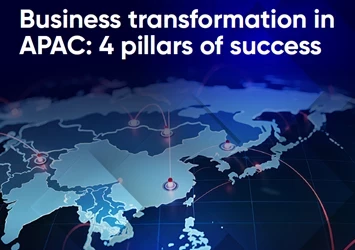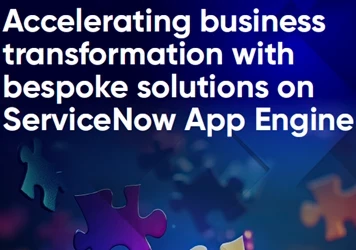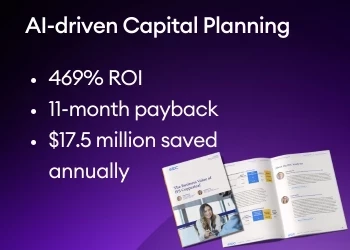5 ways business transformation leaders can avoid innovation theater
Theatrics may energize a room, but they won’t move the needle unless grounded in meaningful business impact
Add bookmark
How can business transformation leaders avoid ‘innovation theater’ – the superficial or symbolic activities undertaken by organizations that appear to be innovative but ultimately fail to generate tangible value or impact?
In 2024, only 35 percent of global consumer packaged goods launches were considered truly new to the market. Even more telling, 85 percent of new consumer packaged goods fail.
Some companies innovate. Others treat corporate innovation as little more than a PR campaign. Perhaps there’s a bit of truth in both. Most companies will realize that creating genuinely new products is difficult and decide that rebranding existing ones might be more realistic. Innovation facilitators may have filled the walls with posters, sticky notes and colorful drawings, but their business impact remains questionable. When innovation becomes so detached from business outcomes, it amounts to little more than theater.
It’s time to reignite your corporate innovation! Here are five strategies to avoid falling into the innovation theater trap of business transformation.
Join the PEX Network community

Don't miss any news, updates or insider tips from PEX Network by getting them delivered to your inbox. Sign up to our newsletter and join our community of experts.
Learn More1. Build something
Innovation theater makes sense if you’re in the performing arts. Adopting personas and performing on stage is your craft, but inside a company, creativity must be directed toward value creation. Yes, value is subjective. The creative types often struggle in business because their ambitions don’t align with the expectations of others. As Peter Drucker famously said, “The purpose of a business is to create a customer.”
Not every employee will directly create customers. Fair enough. What they should contribute to is the commercialization of products or services. Too often, innovation programs conflate creativity as both the problem and the solution, applauding creative behaviors rather than the impact on customers. Watching executives break out of their comfort zones may be entertaining, but spending a day talking about creativity (and how other companies are doing it) only shifts focus further away from real business problems.
2. Stop focusing on engagement and start solving problems
Much of the corporate world seems obsessed with engagement metrics. Change managers, for example, often chase satisfaction scores. Few are aware of this loophole: change management can score high on satisfaction without speaking to a single customer. Their adoption plans are full of speeches, punchlines and audience activities, a routine that’s more suitable for standup comedians. It’s time to focus less on getting crowd reactions and more on solving problems. If engagement is about applause, maybe stand-up comedy is the better career choice.
Register for All Access: AI in Business Transformation 2025!
3. You’ve set up an accelerator, but what exactly are you accelerating?
It’s not a metaphor. Innovation programs often become literal theaters, where practices are staged to appear creative. The more ‘art’ being produced, the more they’re seen as successful. Yet it’s hard to tell what exactly innovation accelerators are accelerating when no business problems have been defined.
Without a clear vision or defined guardrails, ideas quickly turn chaotic. This is the trap of innovation theater: endless brainstorming sessions driven by “what if?” and “why?” questions with no purpose. Instead of limiting ideas to what’s achievable, the process spirals into infinite scenarios. Are they meant to improve the business? Or are they just scripting the next chapter of Marvel’s multiverse?
It's time to ask: what do you want to accelerate? If the aim is to accelerate ideas, brainstorming can be a good start, but remember, ideas must eventually become solutions.
4. Corporations aren’t just ‘bigger’ startups
Startup programs look promising and large firms are drawn to Lean thinking, Agile methods and rapid prototyping. They’ve proven difficult to implement in industries like finance, insurance, law and healthcare. Unlike startups, the belief systems and ‘ways of doing things’ are more ingrained in these larger, more established companies. Corporations aren’t simply larger startups.
Removing bureaucracy and adding Agile workshops doesn’t guarantee change. For example, hospitals still use paper check-in forms. Health care administration hasn’t changed much in that respect. While seemingly outdated, paper remains the preferred method because it reliably meets legal and consent requirements. Digital forms may be faster, but paperwork persists because it still provides psychological comfort.
Change is difficult because the entire company already shares a belief in what works. What theory and practices show is that the assumptions driving a ‘paper and mail’ mindset from the industrial ages must be changed as well.
5. Sign up for a real art class
Whether creativity is innate or learned remains debated. What’s clear is that you can’t force it in a 30-minute workshop. Innovation workshops often mimic stereotypes of creative behavior. Obsessing over ‘how to act’ creative won’t generate meaningful innovation. These workshops sometimes feel like a Shakespearean play. Participants join a workshop where they act out rehearsed behaviors believed to signal creativity.
Some techniques, like idea-sharing, collaboration and challenging assumptions do create paths towards innovation. If your goal is pure creativity, an innovation theater won’t deliver more value than a real theatre. Consider taking a real acting class and experience creativity firsthand.
Join us at All Access: OPEX Operational Excellence 2025!
Creativity and context
Creativity has a vital role in innovation, but only when harnessed to solve real problems, deliver tangible outcomes and create business value. Theatrics may energize a room, but they won’t move the needle unless grounded in meaningful business impact.
The future belongs to those who treat innovation not as a stage show but as a disciplined profession and one that’s tied to business outcomes. If you truly want to develop your creative side, maybe it’s time to sign up for an art or acting class. If you want to stimulate creativity, then now’s a good time to start.
All Access: Future of BPM 2026

You asked, and we listened. Business process management (BPM) remains the cornerstone technology for driving organizational transformation, according to the survey results featured in the latest PEX Report. As we look toward 2026 and beyond, generative AI, agentic AI, and intelligent process orchestration are redefining how processes are designed, executed, and optimized. BPM is your key to adapting swiftly and effectively in this new era.
PEX Network is bringing together industry leaders, technology innovators, and thought leaders to answer your biggest questions and explore the advancements reshaping business today. And you're invited. Register for free to save your spot now!
Register Now























